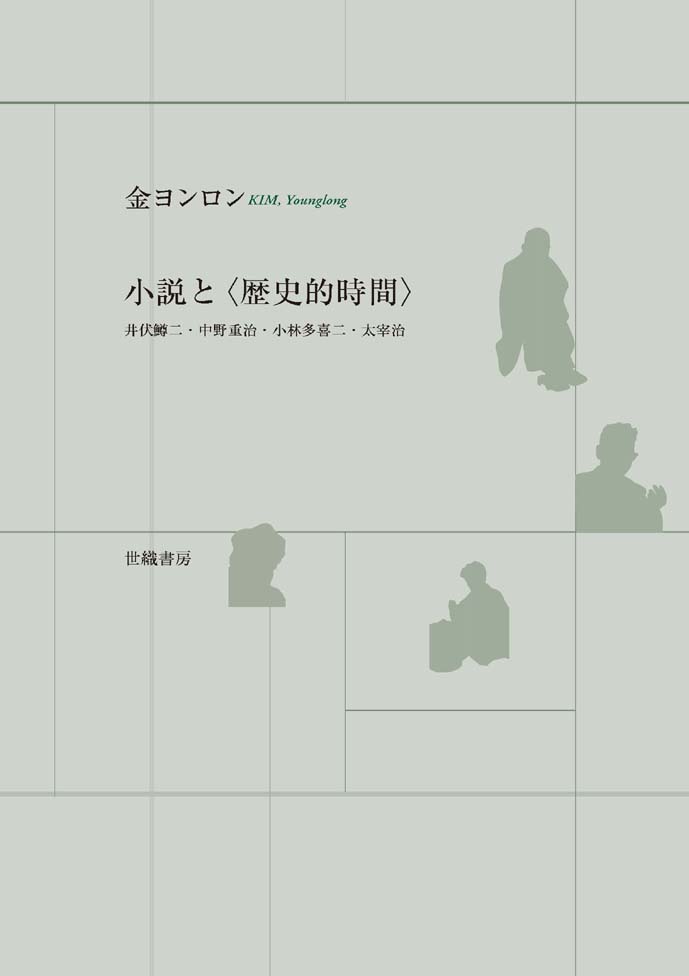
Title
Shosetsu to Rekishi-teki Jikan (The Novel and “Historical Time”)
Size
320 pages, A5 format, hardcover
Language
Japanese
Released
February, 2018
ISBN
978-4-902163-96-4
Published by
Seori Shobo
Book Info
See Book Availability at Library
Japanese Page
This book is an attempt to unpack “historical time” from methods of expression used in modern Japanese novels.
In the Preface, the current state of criticism is investigated, wherein various methodologies—cultural studies, postcolonialism, new historicism, etc.—are said to have run into difficulties. These methodologies, with the initial awareness of the issues weakened, were said to have become fixed only as a method for reading a novel with contemporary “reference” (“documentary”) material.
To break through this apparent barrier, this book turns to the suggestions provided by the various kinds of “time” inscribed in modern Japanese novels. These times include story contents time, story discourse time, time of first appearance, revision time, reprint time, reread time, etc. Using texts as our media, we imagine the “time(s)” of contemporary writers and readers; comparing this with our own time(s) of reading, we can make a record of their intersections, and thus present “historical time” as a new concept. The locus here is that reading is nothing less than the acquisition of this “historical time.”
On the basis of this awareness of these issues, the main text presents readings of modern Japanese novels published in the approximate 20-year period from around 1925 to 1945, readings made while introducing this concept of “historical time.” In the book’s first part, the main subjects are the novels written by Masuji Ibuse at a time when the wartime system was being put into place. This era marked the early stages of Ibuse literature, during which he wrote numerous works, including a representative work, The Salamander. Prior research has evaluated this work as already comprising a literary style linked with the later style distinctive of Ibuse literature. “Cyclic time” was found to be the time characteristic of Ibuse literature, with the discovery that this time constituted the essence of the author’s creation, something which did not change over his more than half a century of literary production. To further delineate the “historical time” evoked by “cyclic time” in Ibuse literature, a rereading is occasioned of his novels written in the period from the establishment of the Peace Preservation Law of 1925 until the Mukden (Manchurian) Incident of 1931.
The book’s second part takes up novels written during the Fifteen-Year War. In this time of strict wartime restrictions on writing, writers were able to continue presenting creative works by relying on the proactive participation of readers. The novelistic method used to present portions which could not be written plainly and directly was to leave “blank” portions for readers to discover and “fill in” (supplement). A work known for its lacunae (omissions and deleted portions) was Life of a Party Member by Takiji Kobayashi. Taken up in this part, then, are this and a series of other works with similar types of omissions (suggested, or marked by ellipsis or asterisks, etc.), with considerations as to their “historical time,” which becomes apparent when considering the lacunae in these novels.
Part three is an analysis centered on the novels of Osamu Dazai written in the period immediately after the defeat of Japan. Spurred by this loss, what becomes clear is a general awareness of time such that the wartime past must be excised and discarded, with an aim to link the current postwar period with a different future. This “interrupted time” resulting from an urge to forget the past indicates a strong premonition that the past could, at any time, return as a “recollection” or memory. During this period, one reads from the texts of Osamu Dazai’s novels a variety of expressive methods employed to evoke in readers a “continuous time”; a groping toward a “historical time” which can oppose “interrupted time.”
Reading novelistic texts as described above, then, for an approximate 20-year period, fosters the conclusion that this was a period where “historical time” was evoked in Japanese literature. The “historical time” examined here began around the time the Peace Preservation Law was established (1925) as a means of preparing for imperial war, followed by a deepening of the roots of a security-preservation system and of war via legal, etc., changes repeated over several times. Then, with the conclusion of the war and the abolishment of the Peace Preservation Law, this “historical time” continued until directly after the war defeat with the establishment of the symbolic emperor system.
(Written by: Younglong Kim / April 10, 2020)



